Trajan's markets, Rome
-
Lewis Wadsworth kindly let me use his model of Trajan's forum and markets in Rome. I've aded some details and textures. As can be seen in the first image, the walls of the row of rooms on the upper storey of the great hemicycle now only survive up to about knee height, so in the subsequent images I've added a reconstruction of this level. It draws on elements from the lower level and tries to follow the architects' concern to achieve an interplay of solid and void to break up the vertical surfaces of the complex.
poster: MCN2304
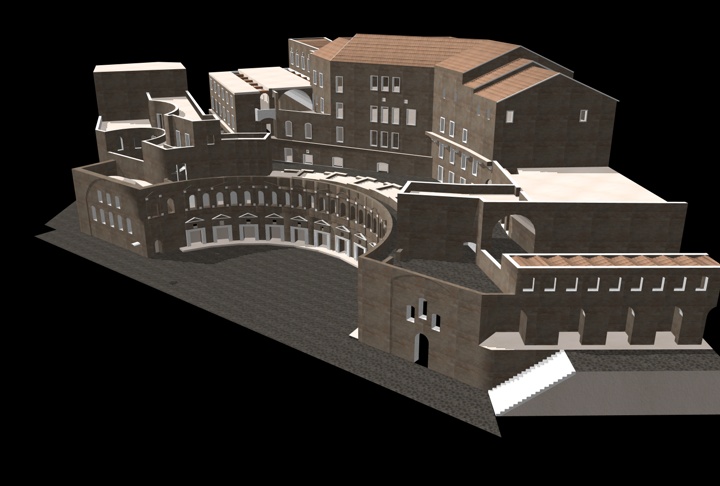
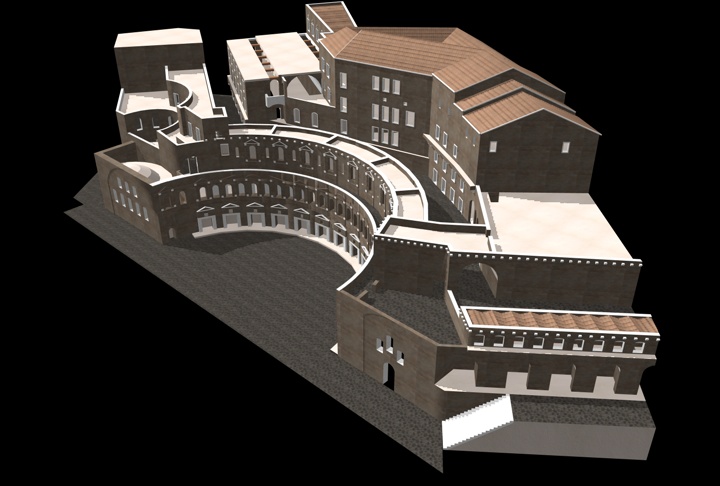
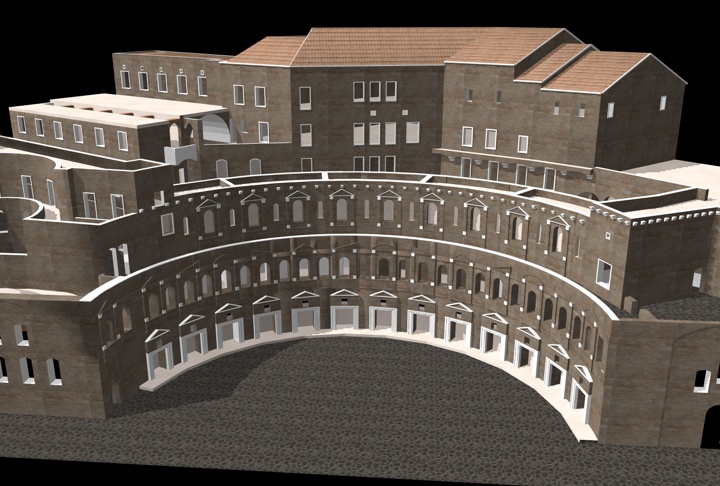
-
This is great work. What did you render in? Why the mystery name with out profile data? Promise we won't bite because it seems that you have some great stuff to show off. You also might want to post it in the Gallery instead of the Bar.
Welcome anyway!
Kelly
-
It's hard to believe that is the same model I made, Matthew. I'll see if I can find some of my old SU1 renderings and post them so everyone can see how much you have improved on my work.
Great job!
--Lewis
poster: Lewis Wadsworth
-
That's really nice! Makes me want to go and have an espresso in Roma! ...to bad I'm in Boulder, CO! Smile
Great looking model though. Has a great feel to it!
-
That is fantastic. I really like it. Please post some close up's if you don't mind.
I moved this topic to the Gallery/SketchUp forum.
-
very impressive work!
-
Thank you, all, for your kind remarks. I'm glad you like these, and especially pleased that Lewis approves of what I've done to his model!
Kelly - thanks for your comments. I'm afraid I'm new here and more-or-less new to the whole world of online forums; I hadn't even noticed that you can add profile data to describe yourself! I hope I've now fixed that (and I thought I'd put this in the gallery - not sure how that happened).
I did all the modelling in SU and then exported it as .3DS to Cinema4D, where I did the renders and a couple of nice flyby movies.
Some close-ups are on the way.poster: MCN2304
-
Here are the close-ups.
I'm not so happy about the way the brick texture obviously repeats, but I do want to use this image: it's a picture I took of the brickwork of the building itself, so it's good to use for accuracy .Matthew.
poster: MCN2304
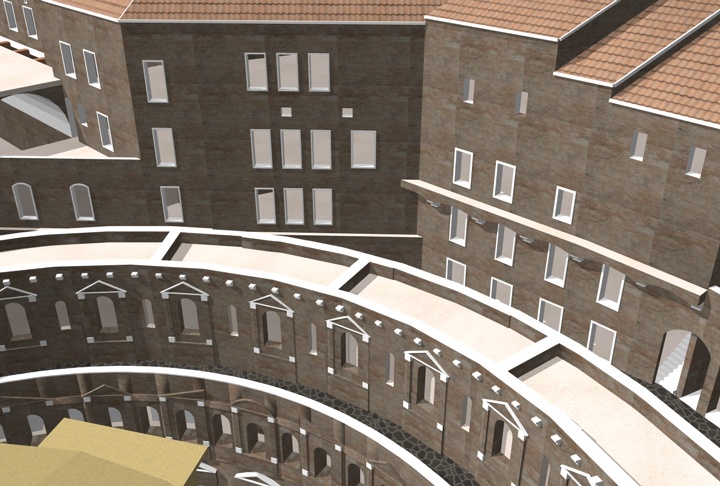
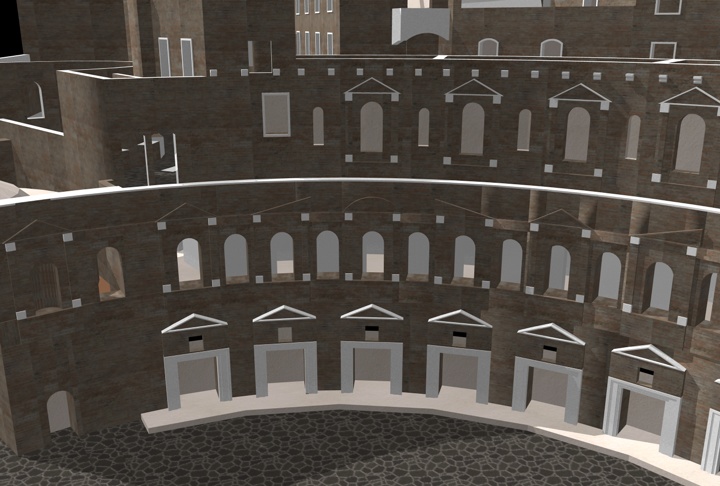
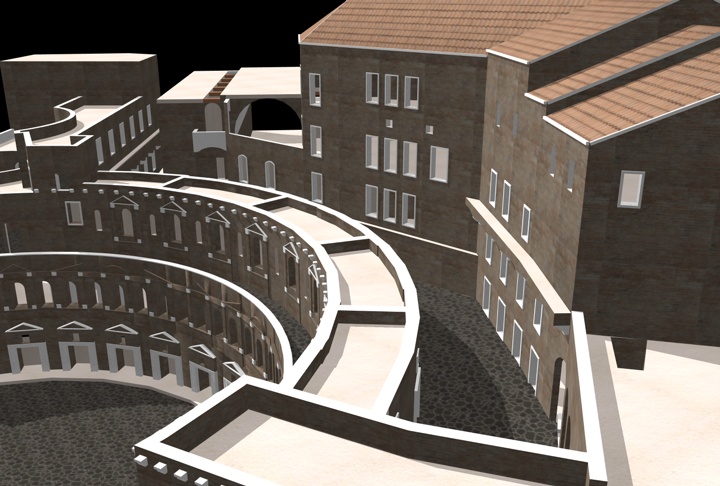
-
@mcn2304 said:
Here are the close-ups.
I'm not so happy about the way the brick texture obviously repeats, but I do want to use this image: it's a picture I took of the brickwork of the building itself, so it's good to use for accuracy .Matthew.]
When I have to do this kind of thing on a historic building, Matthew, I've often found that the best way to eliminate that kind of obvious repetition is to reduce the texture "tile size" down to a single, uniformly-colored and uniformly-illuminated brick/masonry unit and the mortar/joint at the bottom and on one side. I don't use Cinema 4D, but I assume that like most modelers/renderers there is a way to make sure the size of the tile corresponds to the real-world-size of the brick/masonry unit (I do most of my precision architectural material sizing and positioning in SketchUp, in fact, and export the file as a 3DS or obj so that the texture mapping is preserved for the more capable renderers). Once I have made the rendering, I'll post-process it in Photoshop or the GIMP, using adjustment layers, nearly-transparent tinted layers, and layer masks to add natural-seeming variation back to the surfaces. This becomes more of a painting process than a straightforward rendering, but it is an effect way to eliminate the obvious computer-generated look.
I'll see if I can dig up some good example of this that relates to brick masonry.
--Lewis
poster: Lewis Wadsworth
-
Oh, before I forget, here is one of my original renders of that model, made nearly five years ago with my copy of SU 1 and Photoshop 6. It was for a terrible graduate class in "introductory urban design", where we were given a limited and bizarrely arbitrary choice of precedents to illustrate. I chose the Forum and Markets of Trajan because I had recently seen Packer's beautifully illustrated book on the Forum, and I had spent some time in the Markets at one point when I was younger and flirting with the idea of becoming a classical historian myself. And I could use the whole thing as an excuse to learn this mysterious new modeling program that I had stumbled across!
(I was also writing a paper on Pittura Metafisica and architecture at the time, so as opposed to working out a realistic representation I decided to make my renderings look as de Chirico might have painted the subject.)
poster: Lewis Wadsworth
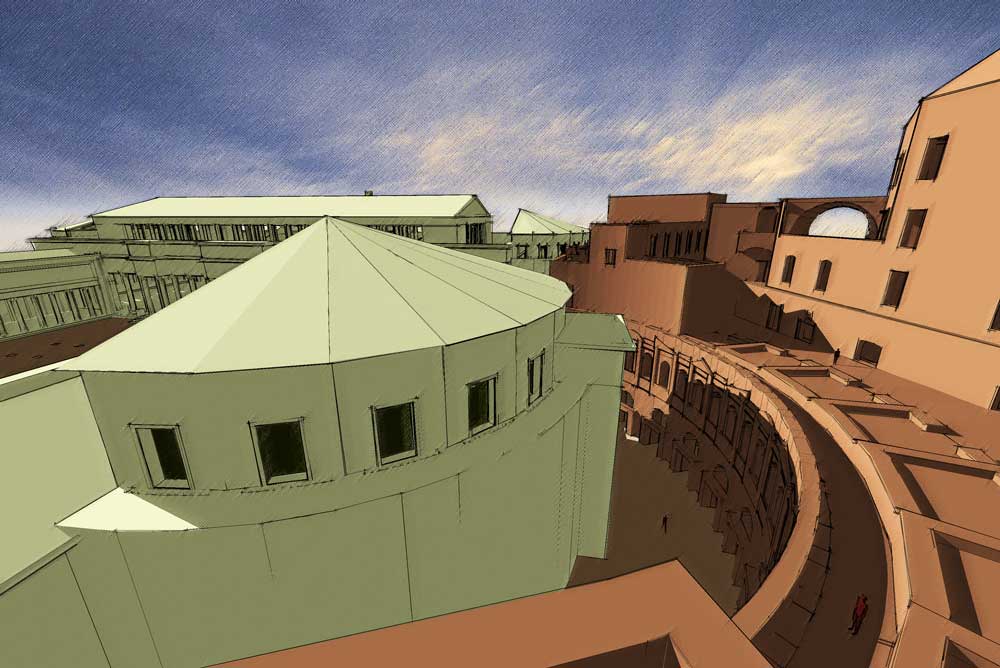
-
Hey Lewis, I really like your work here. It may not have the finishing details, but what it nails is lighting and with the choice of wide lens and camera view there is a real dynamic feel of motion and complexity that gives more of an impression of the city and not of a model. Sometimes it's the whole and not the sum of the parts that gives something a spirit. I dig it!
Thanks for sharing your own personal history too. Man, I wish I could just continue going to school for the rest of my life! There are so many interesting things to learn in life, and cultural history is amazingly interesting.
Cool to see the past of this collaboration!
Cheers,
- CraigD
-
Mathhew,
As a Roman (though "just" provincial) archaeologist I am definitely impressed with your work. Really sorry that I have to rush now but bookmarked this topic (I wonder how in could avoid my eyes anyway) to get back for further discussions.
BTW - what dou you mean by "classicist" as an occupation?
-
Dear Csaba,
thank you! I'm glad you like the model. I'm an academic, a Roman historian in Oxford. I'm not an archaeologist, but do use archaeological as well as literary and epigraphic material, so 'Classicist' seems about right. I find these models useful for my own research (which at the moment is on public libraries in the Roman world) and for teaching. I'm glad to have found some like-minded people on this forum.
All best wishes,
Matthew.
poster: MCN2304
-
Matthew,
I also graduated in history and finished my PhD in ancient history so it's not merely archaeology I do (what's more, epigraphy is also one of my favourites - I'm in the team in Hungary who is organizing the new editions and supplementary inscriptions for the CIL).
So I'm also glad we met here!
-
One thing that I (and others working on Roman buildings) would very much like is to get hold of some reasonably convincing figures to use for statues - men in togas, really, for the sort of places I'm making. Does anyone happen to know where such things can be found, please? A while ago I found a really lovely Minerva on the SketchUp forums, and if there's any more where she came from that would be wonderful.
Matthew.
poster: MCN2304
-
Matthew, why don't you post this question in the Materials/Components/Styles. You might get more people respond there.
-
Thanks Eric - I've moved it there.
Matthew.
poster: MCN2304
-
Lewis, (and other Roman architects)
http://news.bbc.co.uk/1/hi/world/europe/6743991.stmWith luck you should be able to see this outside the UK, if not here's the text:
Ancient Rome has been brought back to life through a unique digital reconstruction project, said to be the world's biggest computer simulation.
An international team of architects, archaeologists and experts spent 10 years working on a real-time 3D model of the city called Rome Reborn.
Some 7,000 buildings were scanned and reproduced using a model of the city kept at a Rome museum.
Users enter the city at the time of Constantine and see inside buildings.
The simulation takes place in AD320, which is said to be the city's peak, when it had grown to a million inhabitants.
"We can take people under the Colosseum and show them how the elevators worked to bring the animals up from underground chambers for the animal hunts they held," said Bernard Frischer, the project's leader who heads Virginia's Institute for Advanced Technology in the Humanities.
The simulation reconstructs the interior of about 30 buildings - including the Senate, the Colosseum and the basilica built by the emperor Maxentius - complete with frescoes and decorations.
The project brought together experts from the University of Virginia and the Los Angeles branch of the University of California, as well research institutes in Italy, Germany and the UK.
Technological feat
To create the simulation, digital images were taken of the vast Plastico di Roma Antica model kept at the Museum of Roman Civilisation as well as laser scans of Rome today.
3D image of the Forum
This is the first step in the creation of a virtual time machine, which our children and grandchildren will use to study the history of Rome and many other great cities around the world
Bernard Frischer
Virginia's Institute for Advanced Technology in the HumanitiesA panel of archaeologists also advised on how statues and monuments would look if they had not been darkened by pollution.
In addition, ancient maps and building catalogues detailing "apartment buildings, private houses, inns, storage facilities, bakeries and even brothels" were used, Mr Frischer said.
The project will be used to carry out further research into ancient Rome's way of life and will be updated according to new archaeological discoveries.
"This is the first step in the creation of a virtual time machine, which our children and grandchildren will use to study the history of Rome and many other great cities around the world," he said.
"For example, in scholarly literature the Colosseum has a great reputation for being a great people mover where people could find their seats very quickly. But estimates of the carrying capacity vary wildly from 35,000 to 78,000," he said.
Talks are said to have begun with Linden Labs to make the entire simulation available on the internet through the company's virtual world Second Life.
The 3D animations based on the simulation will eventually be made available to tourists to prepare them for their visit to the Colosseum, the Forum, or the imperial palaces on the Palatine.
-
Thanks for the link, Paul (and Kris, who posted it in its own thread). So this thing was largely based on the Plastico model? I seem to recall that this masterpiece of modelbuilding was begun in 1933 as part of the Fascist regimes' "New Rome" propaganda, although it wasn't "finished" until the mid 1970's. Is it still considered accurate? Matthew, do you know?
--Lewis
(Incidentally, I'm just an architect with an interest in antiquity, a hobby really...Matthew and Gaieus are the pros is this field.)
Poster: Lewis Wadsworth
-
Thanks for the link. This is an interesting project. It's connected to a very detailed, super-realistic reconstruction of the Roman Forum that the same team has been producing for a while - see here:
http://dlib.etc.ucla.edu/projects/Forum/search
This is a fine piece of work, rigorous, scholarly, and no doubt producing huge models made by teams of researchers and modellers.
The link seems to be describing something different, a simpler model of the whole city made from scans of Gismondi's plastico which, as you say, is now getting elderly.
As it happens I've been trying this week to make a city-sized Rome terrain within which to set detailed models of individual buildings. If I had the resources of this team I'd be tempted to solve this challenge in the same way; the Gismondi model is ready-made, and based on accurate topographical data and much archaeology, and it does give a great impression of the city as a whole. But it is only an impression; beyond the rough road layout not much is known of the vast majority of day-to-day buildings in Rome, and among the great monuments of which decent archaeological remains survive much has been done in the decades since this 'plastico' was made to alter the reconstructions it offers. The new excavations in the imperial fora, for instance, are turning up all sorts of major and minor alterations.
So it's a starting point, and I'm sure Prof. Frischer's team has done and will do a lot to update it, but it must involve reconstructive guesswork.
I love the applications they predict for this. I've heard Prof. Frischer lecture on the same subject - the potential for study material, virtual tours, even one day some sort of immersive VR experience on-site via a hired headset or handheld device is enormous.All best wishes,
Matthew.
Poster: MCN2304
Advertisement







